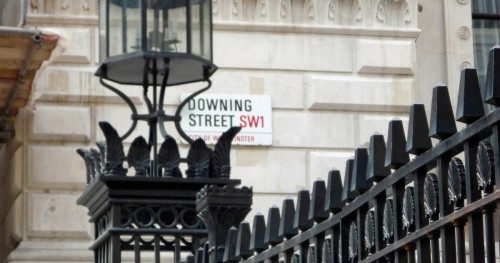
How to register as self-employed: the basics
There were around 4.8 million self-employed people in the UK in 2017 according to the National Office of Statistics, and this number is on the rise. There are multiple reasons that people are going self-employed and becoming their own boss. Whether they have taken the plunge alone, ‘on the side’ of a 9-to-5, or become self-employed to supply their current employer, all these people must formally register as self employed with the HMRC and registering as self-employed has never been easier.
To be ‘self-employed’ means you work for yourself and take responsibility for paying your own income tax and National Insurance, both of which are calculated by reference to your profits as a stand-alone business. Yet before you can register as ‘self-employed’, you should gather both personal information and information about your circumstances, in advance of starting to complete HMRC’s online registration form. Assembling all the required details first is almost essential, as HMRC’s site will not let you save the information you input once you have started and returned to it at a later date, primarily for security reasons.
HMRC checklist - what you need:
- Name
- Address
- National Insurance number
- Date of birth
- Contact telephone number
- Contact email address
- Date your self-employment commenced
- Nature of your business
- Your business address
- Unique Tax Reference (UTR) if you were previously within Self Assessment
- The business' UTR if you are joining an existing partnership (see the partnership’s past SA form)
- The full name(s) and date of birth of your business partner(s) ,
The seventh bullet point - ‘date your self-employment commenced’ is purposefully phrased in the past tense, but the newly self-employed should not be complacent. Although you have a three-month window in which to tell HMRC that you have started trading, failure to notify the department within this period will result in a £100 fine. As a result, business advisers say the shrewdest self-employed people inform HMRC that they are trading immediately. (Editor's Note: The three-month notification penalty is no longer issued by HMRC)
So, once you’ve undertaken your first piece of self-employed or freelance work, you are obliged to contact HMRC to let them know about the additional income. Further penalties can also arise the longer you leave it to register when tax payments are due and have not been met. This applies to anyone registering with HMRC as self-employed, including those persons in a partnership, each of whom must register their status as a self-employed person separately.
NICs
Also under HMRC’s updated guidance, the newly self-employed must also register to pay Class 2 National Insurance contributions (NICs) by completing form CA5601, even if their self-employment is in their spare time. This requirement to register for Class 2 NICs applies even if you are also paying Class 1 earnings-related contributions as an employee (or officeholder). Payment is quarterly by post or by Direct Debit. However, the newly self-employed do not have to pay Class 2 contributions if their earnings, defined as money left after expenses, are below the Small Earnings Exception threshold – currently £6,205 for the tax year 2018/19.
So, if you can show that your net earnings from self-employment for the stated period are expected to be less than £6,205, you should apply to HMRC for the exception as soon as possible. If approved by HMRC, the self-employed person will receive a Certificate of Small Earnings Exception (SEE), which will state the period it covers and will normally end in April at the end of the tax year. The certificate is usually effective from the date of the application although it may be backdated for up to 13 weeks, but cannot be issued to cover any week that the person already paid a Class 2 contribution. Yet you may be able to be reimbursed for the contributions you have already paid, as the self-employed person, not their accountant, can send a signed letter to HMRC, alongside proof of earnings, asking for a refund.
Similarly, HMRC is happy to hear from individuals if they work for an employer as well as being self-employed because it might be able to delay their payment of Class 2 and/or Class 4 contributions. However, the department says these individuals should only apply to defer such tax payments if their net self-employed earnings are expected to surpass the small earnings exception level (£6,205). If their earnings are due to come in below the threshold, the person may qualify for SEE, whereas those above it can speak to HMRC on 0845 915 7141 about delaying Class 2 and/or Class 4 contributions.
All self-employed people should note that, while they are defined as working for themselves, they can also have people working for them. If you are thinking of taking someone on or already employ someone else, HMRC recommends consulting its New Employers guidance, or telephoning its New Employer helpline (0300 200 3211) for help and to register as an employer.
VAT
The other registration issue facing the self-employed is whether they should register forVAT, which is mandatory if their turnover exceeds £85,000 for 2018/19, or is likely to exceed this amount soon. Advisors say that even if the newly self-employed do not anticipate their turnover reaching this threshold, it may still be advantageous for some of them to register for VAT immediately. Affected businesses should note that HMRC operates a range of simple payment schemes to help individuals manage their VAT, such as the Annual Accounting and Flat Rate schemes.
With most of the registration process now complete, you are almost working for yourself. The final decision and arguably the biggest, for the newly self-employed is choosing which structure you will use to supply your services.
For more information, try our Ten Tips For Starting Your Freelance Company, HMRC’s ‘Giving your business the best start with tax’ and Business Link’s ‘Legal structures: the basics.’
More on setting up a company and umbrella companies for freelancers. You can find a more comprehensive list of umbrella companies on our sister site ContractorUK.



Comment
Log in or create your account to react to the article.